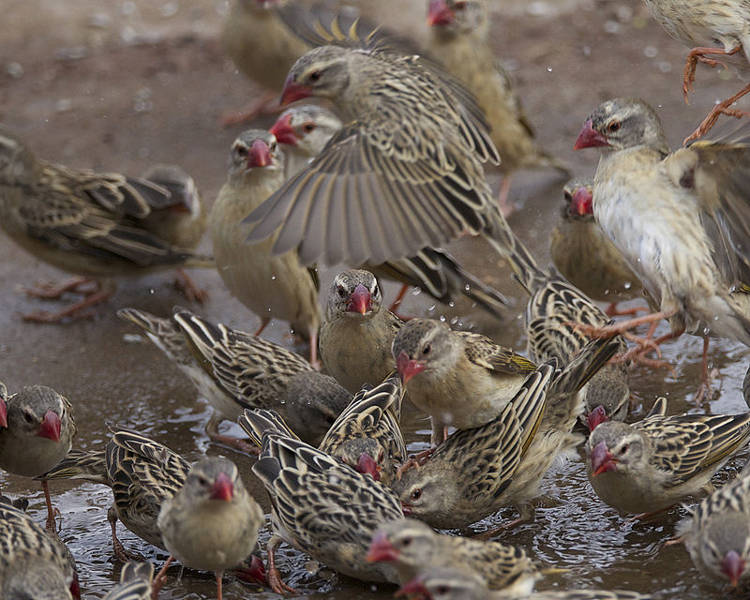To most of the world, the red-billed quelea is a cute, sparrow-like bird native to Sub-Saharan Africa, but to the farmers of the regions that this little creature calls home, it is a pest capable of wiping out their crops.
Biblical plagues mention insects like locusts, lice and flies, but to the people of African countries like Botswana, Ethiopia, Kenya, South Africa, Sudan, Tanzania, and Zimbabwe, birds – one species in particular – are more dangerous than any of them. There is a very good reason why the red-billed quelea is popularly known as Africa’s feathered locust. This small, adorable bird eats about four grams of plant seeds per day, which doesn’t sound like much, but when you consider that it feeds in flocks of millions of individuals, the math starts to get pretty scary for farmers and those who depend on their crops.

Photo: Lip Kee/Flickr
To say that the red-billed quelea is a voracious little bird would be an understatement. This single species causes such extensive damage to cereal crops around Sub-Saharan Africa, that countries have gone as far as to detonate fire bombs in their giant colonies. This, and other population control techniques, like spraying huge amounts of avicides (bird-killing chemicals) have been largely unsuccessful, and the red-billed quelea remains the most numerous undomesticated bird on the planet, with an estimated population of 1.5 billion.
The tiny red-billed quelea can be described as a cute bird, but seeing a cloud of them approaching a wheat field can be overwhelming. They fly in clouds of millions of individuals, descending upon their “prey” in unison, with the birds that run out of food at the rear of the pack flying over the entire group to take the lead as they move on to their next victims, thus creating the illusion of a rolling, morphing cloud.
Africa’s feathered locust has plenty of natural predators, such as birds of prey, snakes, warthogs, squirrels, civets, mongooses, small and big cats, monkeys and jackals, not to mention the humans who catch hundreds or thousands of them at a time using fine fishing nets. But the impact all of these has had on red-billed populations around Africa has been deemed insignificant.
Annual plagues of red-billed queleas have historically been one of the reasons that prevented several African countries from achieving self-wheat sufficiency. For decades, governments have tried eradicating them at least in certain regions, but their efforts have so far proven futile. These tenacious little birds are more than humans can handle.
Control methods like fire bomb detonations and the spraying of avicides in the birds’ humongous colonies of over 30 million individuals have been known to have unwanted side effects, like the accidental killing of other bird species, some of them endangered, as well as the mammals that sometimes eat their corpses. At the same time, leaving them to their own devices is not a solution.
Experts estimate that queleas cause over $80 million worth of damage to grain crops around Africa, despite farmers’ best efforts to protect their lands. The cost of actively keeping these voracious birds at bay significantly raises the cost of production and has a serious impact on food availability in Africa.
“The eight plague”, as red-billed quelea are sometimes called, remains a serious challenge for African farmers, one that they are struggling with, even with help from their national governments. Where there are grain seeds, there will be queleas, and keeping them away – especially the ravenous juveniles – is virtually impossible.












